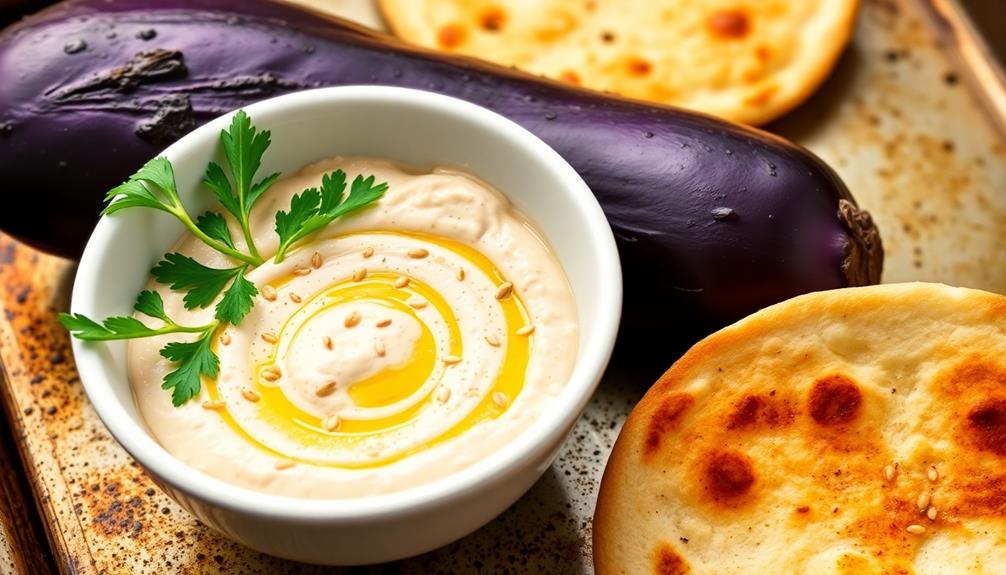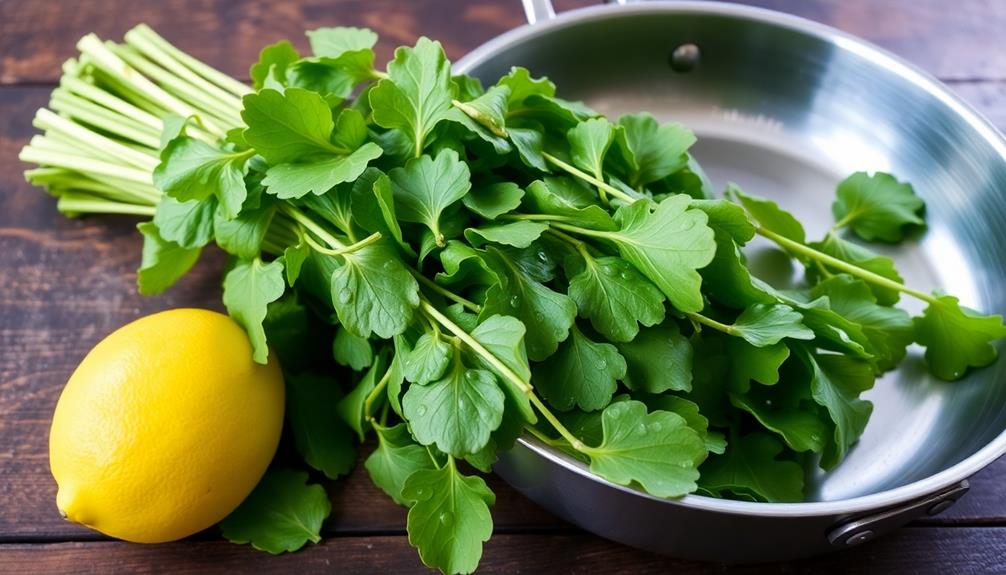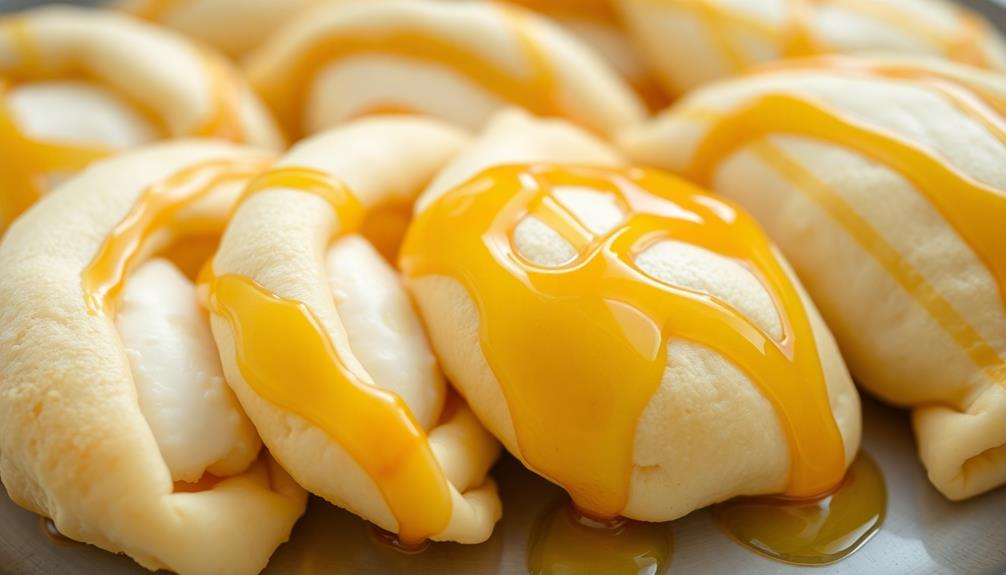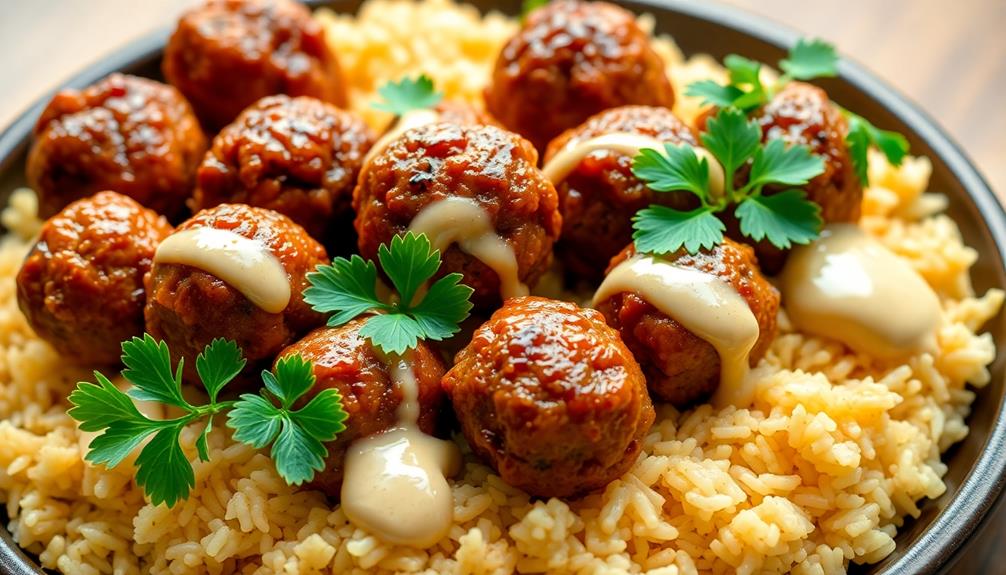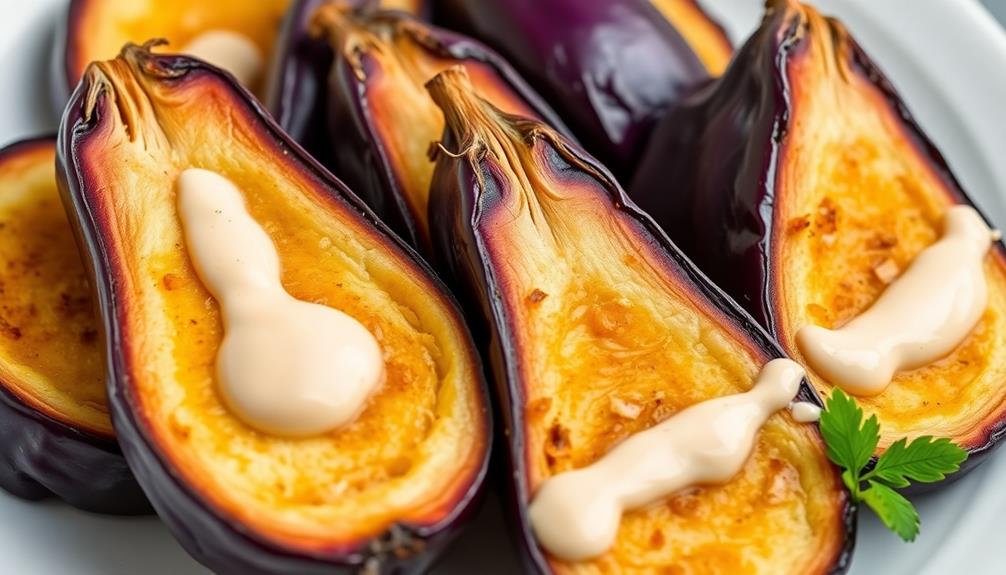Baba ghanoush, the beloved Middle Eastern dip, has captivated taste buds for centuries. This velvety delight originated from ancient civilizations of the Levant region, where it was traditionally prepared over an open fire for a smoky flavor. Today, you can easily recreate this iconic dish at home by roasting eggplants until soft and charred, then blending them with tahini, lemon juice, garlic, and seasonings. The result is a creamy, complex spread that pairs perfectly with pita bread, vegetables, and meats. Ready to discover more about the rich history and endless possibilities of this versatile culinary treasure?
Key Takeaways
- Baba ghanoush is a Middle Eastern dip made from roasted eggplant, tahini, lemon juice, and garlic, known for its smoky flavor and velvety texture.
- Baba ghanoush has its roots in the ancient civilizations of the Levant and has evolved across various cultures, showcasing local ingredients.
- The traditional preparation method involves roasting the eggplant over an open fire to impart a distinct smoky aroma and flavor.
- Baba ghanoush is a staple in Middle Eastern households today and is celebrated for its complex and nuanced flavors.
- The key steps in making baba ghanoush include roasting the eggplant, blending it with tahini, lemon juice, and garlic, and adjusting the seasoning to achieve the desired flavor balance.
History
Baba ghanoush, a beloved Middle Eastern delicacy, has a rich history rooted in the region's culinary traditions. This savory eggplant dip has been enjoyed for centuries, tracing its origins to the ancient civilizations of the Levant. Today, baba ghanoush remains a staple in Middle Eastern cuisine, loved for its smoky, garlicky flavor and creamy texture. It is often served as part of a mezze spread or as a dip for pita bread. Many families have their own secret baba ghanoush recipe that has been passed down for generations, often served alongside traditional dishes like the shish taouk recipe.
In the past, baba ghanoush was often prepared over an open fire, imparting a delightful smoky flavor to the eggplant. As the dish spread throughout the Middle East, each culture added its own unique touch, creating variations that showcase the diversity of local ingredients and cooking methods.
Today, baba ghanoush remains a staple in many Middle Eastern households, served as an appetizer, a side dish, or even as a main course.
The velvety texture and complex flavors of this dip have captivated taste buds around the world, making it a beloved part of the region's culinary heritage. Whether enjoyed with freshly baked pita bread or as a dip for crisp vegetables, baba ghanoush continues to be a cherished and versatile dish that celebrates the rich culinary traditions of the Middle East.
Cooking Steps
To prepare the baba ghanoush, first preheat your oven to 400°F (200°C).
Next, pierce the eggplant with a fork several times. Place the eggplant directly on the oven rack and roast for 30-40 minutes, turning it halfway through, until it's very soft and the skin is charred.
Once the eggplant is done, let it cool slightly, then cut it in half lengthwise. Scoop out the flesh into a food processor.
Add lemon juice, tahini, garlic, salt, and a pinch of cumin. Blend everything until it's smooth and creamy.
Taste the baba ghanoush and adjust the seasoning if needed.
Serve it chilled or at room temperature, with warm pita bread, fresh vegetables, or your favorite dippers. Enjoy this delicious Middle Eastern dip!
Step 1. Preheat Oven to 400°F

Preheat your oven to a toasty 400°F. This high heat will help create a lovely, caramelized crust on the eggplant, locking in all that delicious flavor.
Make sure your oven has fully preheated before you add the eggplant – you want it nice and hot!
Once the oven's ready, grab a baking sheet and line it with aluminum foil or parchment paper. This will make cleanup a breeze later on.
Carefully place the whole eggplants right onto the prepared baking sheet. You don't need to poke any holes or do any special prep – just pop them in as is.
Set a timer for 30-40 minutes, keeping an eye on them as they roast. The eggplants are done when they're super soft and you can easily pierce through the skin with a fork.
Be careful when removing them from the oven – those babies will be piping hot! Let them cool for a few minutes before starting the next step.
Step 2. Peel and Dice Eggplant

Once the roasted eggplants have had a chance to cool, it's time to peel off their skins. Grab a sharp knife and gently slice into the eggplant's skin. Carefully peel it away, revealing the soft, tender flesh underneath. Be careful not to waste any of the delicious interior.
Next, dice the peeled eggplant into small, even cubes. This will help it cook evenly and blend smoothly into the Baba Ghanoush. Use a sturdy cutting board and a sharp knife to chop the eggplant into bite-sized pieces. Try to make them as uniform as possible so they cook at the same rate.
Once you've diced the entire eggplant, you're ready for the next step. Gather the cubed eggplant and set it aside while you prep the other Baba Ghanoush ingredients.
The diced eggplant will be the star of this flavorful Middle Eastern dip, so handle it with care. Get ready to add some serious flavor!
Step 3. Roast Eggplant Until Soft
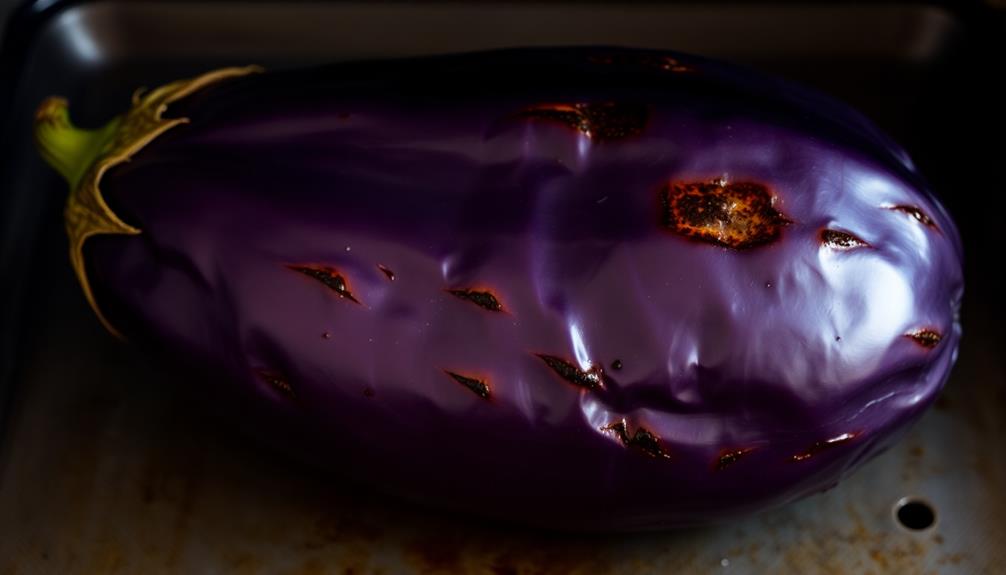
With the eggplant peeled and diced, it's time to start cooking.
You'll want to preheat your oven to 400°F (200°C) so it's nice and hot. Grab a baking sheet and line it with some parchment paper or a silicone mat. Toss the diced eggplant onto the sheet, making sure the pieces aren't crowded. Drizzle them with a bit of olive oil and give them a gentle toss to coat evenly.
Now, pop the baking sheet into the oven and let the eggplant roast for about 20-25 minutes. You'll know it's ready when the eggplant is super soft and starting to caramelize on the edges.
The key is to roast it until it's really tender, so don't be afraid to let it go a bit longer if needed. Once it's done, you can remove the baking sheet from the oven and let the eggplant cool slightly before moving on to the next step in your baba ghanoush recipe.
Step 4. Blend Roasted Eggplant With Tahini

Next, you'll need to blend the roasted eggplant with tahini, lemon juice, garlic, and a few other ingredients to create the signature baba ghanoush dip.
Start by scooping the soft, smoky eggplant flesh into a food processor. Add a couple of tablespoons of tahini, which is a creamy paste made from ground sesame seeds. Squeeze in some fresh lemon juice to balance the richness, and don't forget to mince a clove or two of garlic for a savory kick.
Next, season the mixture with a pinch of salt and a dash of ground cumin. Blend everything together until it becomes a smooth, creamy consistency. Taste and adjust the seasoning as needed, adding more lemon juice for brightness or tahini for a nuttier flavor.
Once you're satisfied with the taste, transfer the baba ghanoush to a serving bowl. Drizzle it with a little olive oil and sprinkle some chopped parsley on top for a fresh, herby finish.
Serve with warm pita bread or crunchy veggies for dipping, and enjoy your homemade Mediterranean delight!
Step 5. Stir in Lemon Juice and Seasonings
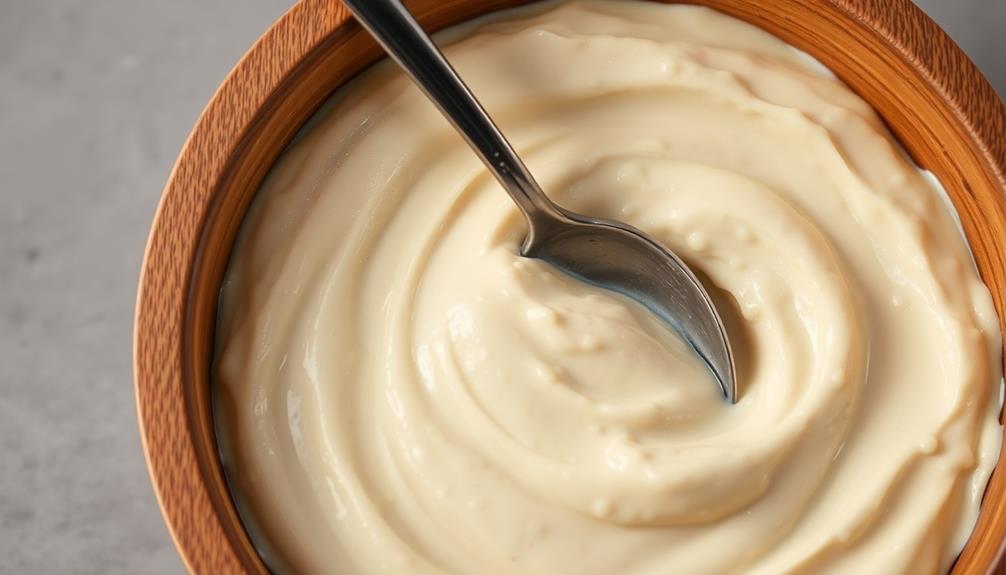
Go ahead and stir in the lemon juice to balance out the richness of the tahini.
You'll want just a couple of tablespoons – any more and it'll overwhelm the other flavors. Swirl it in gently until the mixture is smooth and creamy.
Next, it's time to season your baba ghanoush. A pinch of salt and pepper is a must, but don't be afraid to get a little creative.
A dash of ground cumin or a sprinkle of smoked paprika can take your dip to the next level. Finely chopped garlic or a pinch of dried parsley also make great additions.
Stir everything together until the seasonings are evenly distributed.
Taste as you go and adjust the flavors to your liking. The goal is to create a perfect harmony of flavors that complements the smoky eggplant.
Once you're satisfied, transfer the baba ghanoush to a serving bowl and get ready to enjoy this Mediterranean delight!
Final Thoughts
Baba ghanoush is an incredibly versatile dish that can be savored in countless ways. Whether you enjoy it as a dip, a spread, or a side, this smoky eggplant delicacy is sure to tantalize your taste buds. The rich, creamy texture and the blend of earthy flavors make it a true delight.
One of the best things about baba ghanoush is its versatility. You can serve it with pita bread, fresh vegetables, or even as a topping for grilled meats or roasted potatoes. The possibilities are endless!
And let's not forget how nutritious it is, thanks to the eggplant's vitamins and minerals.
Frequently Asked Questions
Is Baba Ghanoush the Same as Hummus?
You're right, baba ghanoush and hummus aren't the same thing!
While they're both delicious Middle Eastern dips, they're made with different key ingredients. Hummus is made from chickpeas, while baba ghanoush is made from roasted eggplant.
So they've distinct flavors – hummus is nutty and creamy, while baba ghanoush has a smoky, tangy taste.
Both are super yummy, so try them out and see which one you like best!
How Long Does Baba Ghanoush Last in the Fridge?
Baba ghanoush is a delicious dip that can last in the fridge for 3-5 days. Isn't that great news?
You'll want to store it in an airtight container to keep it fresh. When it's time to enjoy your baba ghanoush, simply give it a quick stir and you're good to go!
This tasty treat is perfect for snacking or serving as part of a mezze platter. Just be sure to use it up before it starts to lose its flavor.
Can I Make Baba Ghanoush With Olive Oil Instead of Tahini?
Absolutely! You can definitely make baba ghanoush with olive oil instead of tahini.
In fact, using olive oil gives it a delightful, rich flavor. Just roast your eggplant, mash it up, and mix in some olive oil, garlic, lemon juice, and your favorite seasonings.
The olive oil adds a lovely creaminess and depth of flavor. Give it a try – you'll be amazed at how delicious it turns out!
Is Baba Ghanoush Gluten-Free?
Yes, baba ghanoush is gluten-free! This delicious dip is made from roasted eggplant, which doesn't contain any gluten.
The other main ingredients, like olive oil, garlic, and lemon juice, are also naturally gluten-free.
So if you're following a gluten-free diet, you can enjoy baba ghanoush without any worries.
It's a healthy, flavorful option that's perfect for dipping veggies or spreading on gluten-free bread.
Go ahead and give it a try – your taste buds will thank you!
What Is the Best Way to Serve Baba Ghanoush?
When serving baba ghanoush, you've got plenty of options! You can spread it on warm pita bread, use it as a dip for crispy veggies, or even drizzle it over grilled meats or fish.
Don't forget to add a sprinkle of paprika or a squeeze of lemon juice to really make the flavors pop.
No matter how you enjoy it, baba ghanoush is sure to be a hit at your next gathering!
